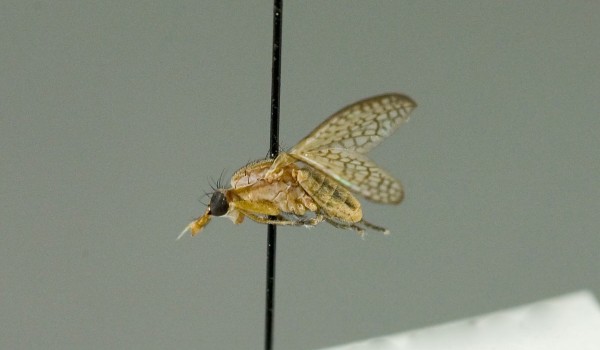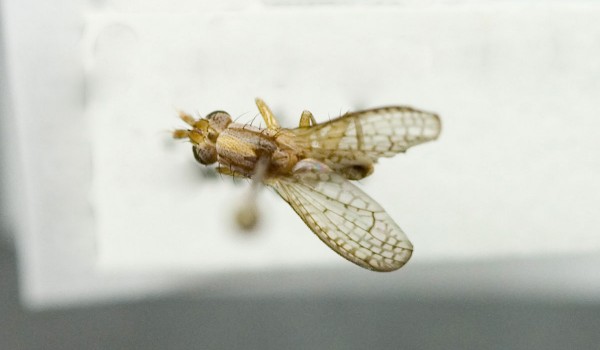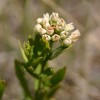Flies (Diptera)
Marsh Flies
SciomyzidaeAlso called Snail-killing Flies, insects in this family can be abundant. Adults are uncommon flower visitors of plants in moist prairies. Many larvae develop as parasitoids. They are aquatic or terrestrial and tend to prey on freshwater or terrestrial snails and their eggs, fingernail clams, or slugs. They have potential to be used in the biological control of some snail species that are known to carry serious internal parasites of humans and domestic animals.
Representative Genera and Species:
Limnia
Pollinator Life Cycle:
They have four life stages: egg, larva, pupa, and adult. In some species, females lay eggs on a snail’s shell. A larva then crawls inside, feeds on the snail, and carries out its development there. Once larval growth is complete, the host dies. In other species, eggs are laid on emergent vegetation with larvae actively searching for prey.
Rarity Status:
The status of Canadian species has not yet been assessed, and none are legally protected.
Physical Appearance:
These small to medium-sized flies are 1.8–11.5 mm long, and slender to robust with elongated legs. They are typically dull yellow, brown, red or gray in colour, but may be shiny black. The lower part of the face may be elongated and dish-shaped. Wings can be spotted or patterned, and are typically longer than the abdomen. Their antennae extend forward.
Pollinator Habitat:
Typically found around marshes, ponds, lakes, bogs, swamps, or wooded areas. Adults often perch on grasses and vegetation, while larvae are aquatic.
Canadian Distribution:
- Alberta
- British Columbia
- Manitoba
- New Brunswick
- Newfoundland/Labrador
- Northwest Territories
- Nova Scotia
- Ontario
- Quebec
- Saskatchewan
- Yukon
Prairie Types:
- Fescue Prairie
- Mixed Grass Prairie
- Tall Grass Prairie








 Heart-leaved Alexander
Heart-leaved Alexander  Pale Comandra
Pale Comandra